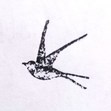Hûw Steer's Blog, page 6
January 12, 2025
Eyewitness Accounts
It is not enough to simply write: one must read; and setting aside the need to read other fiction, one must research. I’m a historian. I know this very well.
My wife and I each have a non-fiction shelf, and mine is almost all history books, the legacy of two degrees, from ancient China to the Falklands and quite a few things in-between. But not all of these books get used often… or at all, really. A lot of them are fairly heavy academic texts that I actually got for university – the sort of thing that is very useful when you’re doing academia but not exactly suited to a casual read. As handy as it is to have a monograph on a specific 3rd-century Chinese strategist, or a guide to the economics of the later Roman Empire, these are not topics that are likely to come up in my writing, and if they do, then the Internet will probably furnish me with a swifter summary. Similarly, at the chronological future end of the shelf are a bunch of books on Star Trek, which were the cornerstones of my two dissertations and have since not been too helpful, though they are at least fun rereads.
But there are some books that are well-worn with use. There are some books that are universally helpful when I’m writing, books that I’ve been referencing regularly since before I actually started writing. And partly in a fit of nostalgia but partly through a genuine need to have a hard copy of my own, I visited Abebooks over Christmas, and picked up what I consider to be one of the historically-minded fantasy author’s bibles.
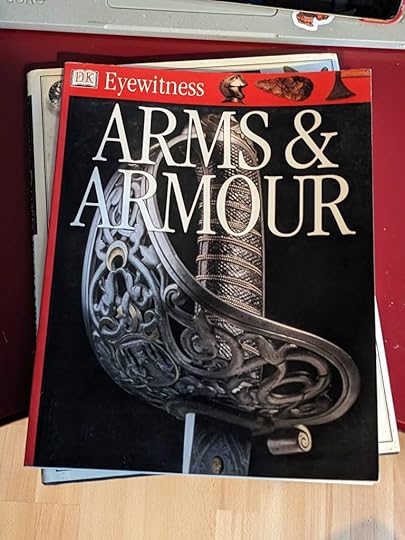
I think that over my time at primary school I must have read every Eyewitness guide in the library five times over. And in high school. (They didn’t have any at sixth form or university, more’s the pity.) These books were and are fantastic. Tons of information, neatly summarised, surrounded by images that are still jaw-droppingly high quality to this day, even the ones that were taken in 1988 when these books first came out. This is now a 160-book series covering every topic from the Vietnam War, apparently, to rocks and minerals. (Another favourite of mine: my grandparents gave me a few of their original guides long years ago, including Rock and Mineral, and though that copy is gone I’ve picked up an identical replacement. Gemstones are cool.)
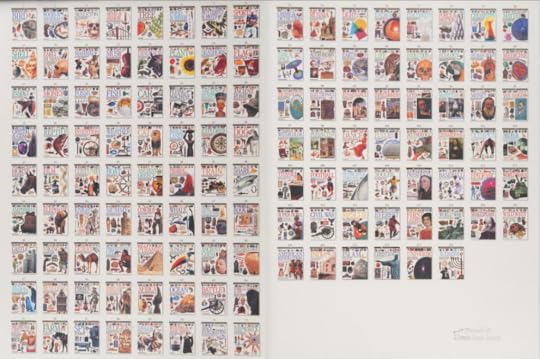 There were at least 126 books in the original publication order – annoyingly, DK don’t number the guides any more, so it’s hard to tell which of the now-160 are the newest ones.
There were at least 126 books in the original publication order – annoyingly, DK don’t number the guides any more, so it’s hard to tell which of the now-160 are the newest ones.I spent hours as a kid curled up with Eyewitness guides just absorbing information about anything and everything, and so much of it has stuck. And now I can do so again.
This is not just the nostalgia talking: these books are genuinely useful. Arms and Armour is packed with weird and wonderful weapons, from cinquedeas to flintlock cutlery – and every page is full of explanations of their use, too. 17th-century sabre exercises, how to clean a flintlock firearm, the names of every single piece of a suit of plate armour – it’s all there, crammed into this book with museum-quality images. When you’re writing fantasy and you need to know how long your average rapier was, or find a good name for an unusual poleaxe, this is exactly the book you want within arm’s reach.
 I have yet to arm someone with a cinquedea. I really want to. It’s such a cool sword design.
I have yet to arm someone with a cinquedea. I really want to. It’s such a cool sword design.In fact having bought Arms and Armour I realise that I need to pick up Knight, too because it’s got a fantastic double-page spread of the process of putting on a suit of plate, clearly performed and photographed in detail just for this book and something that I have referred back to many, many times in my head without actually needing to look at the book. The effort that’s gone into making these books still shines through to this day, for all the original run is almost 40 years old now. This is the gold standard for a kids’ educational work, as far as I’m concerned: accessible, visually interesting and detailed. It doesn’t get better.
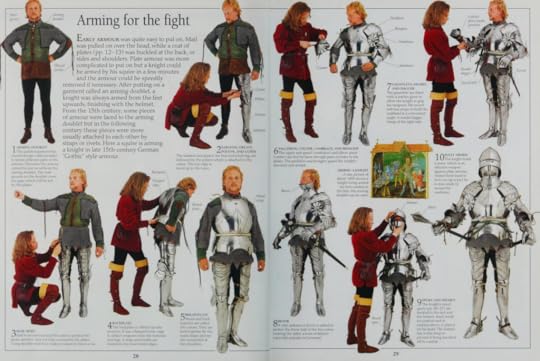 Thank you, re-enactors, for modelling this so beautifully.
Thank you, re-enactors, for modelling this so beautifully. I am also amused to see how many of the museums who contributed images and artefacts to these books I’ve now visited as an adult. Very effective sneaky advertising, there.
Yes, I am an adult. Yes, I have dozens of reference books that go into far more detail about their niche subjects than an Eyewitness guide ever has. But when I’m writing I don’t want to stop for two hours while I thumb through a book thicker than my leg to find a paragraph about some hyper-specific aspect of Roman life that may or may not be helpful to me. I will do that, when I need to, and I frequently do. But 9 times out of 10 I don’t need all that faff: I just need a quick reference, and I’d rather get it from a book than the Internet. The Eyewitness books are perfect for that: a whole topic spread out before me like a little museum of my own, every image and paragraph just waiting to spark a new idea. It’s not just information. It’s inspiration.
January 5, 2025
Puddles
I’ve lived in London for a decade now. I’ve seen the city in all weathers, fair and foul, most recently the latter. It’s been, as it has been everywhere in the land, bloody freezing lately. But in all those years, I had never once, to my recollection, seen a completely frozen puddle – until this week.
Now I’m fairly sure that this statement is completely untrue, and I just don’t remember seeing one: it’s been this cold many times before and I vaguely recall seeing even the big ponds in the nearby parks at least partly iced-over. But bear with me here; there is a point to this rambling, probably.
I was walking to the station, wishing I’d worn my bigger coat, on my way to work, early-ish in the morning; hands firmly in gloves and pockets, scarf covering as much face as possible. There weren’t many people around. And I almost missed it, too, because in all honesty it was a pretty pathetic excuse for a puddle: a little dip in the pavement about 2 inches deep at most, half-full of leaves and other assorted Street Goop and thus blending nicely with the surrounding paving.
But it was there, and it was frozen over, all the way. And just for a moment, I was 5 years old again. Because in the countryside we got proper puddles out in the fields, and it got properly cold, and there was nothing better, out on a winter walk with the dog, than finding ice and getting to play with it. Picking up great chunks of it and throwing them, or trying to walk out as far as we could across the puddles (not very far, even when we were small) before the ice gave way and we fell all few inches into the water. Sometimes there’d be a big pond frozen, and if we were daring and our parents got to test it first we’d get to walk out a little way on that, or lob sheets of ice out onto the surface and watch them shatter and scatter away into the mist.
There’s something about ice, especially when you’re small. Everything is so still when it’s frozen, so eerily calm. Picking up bits of water in your hands is just so weird, when you think about it – as you do when you’re little, and as you don’t when you’re an adult. Those first times you go out walking and see those ubiquitous puddles – and it helps being British here because there are always puddles in the winter – suddenly changed, rendered solid, no longer obstacles but passable, no longer to be avoided but enjoyed – it’s like the whole world has changed. And in winter it has, really. Those crisp, frozen mornings are a delight, even now. They’re not the same in the city, of course. The city always looks like the city, even when it’s cold. But sometimes, when the frost lies thick or even when it snows, I get a glimpse of proper winter. It’s these glimpses, these memories, that fuel so much of what I do. I need to write a winter, while it’s still fresh in my mind. I need to get this cold on a page, after so long writing about far more clement weather.
I broke the ice with my foot, that morning. Just a prod, just a crack. It made me smile.
December 30, 2024
Resolutions: 2025 Edition
The last blog of the year is upon us, and so once again I must look back at the last year of writing, reread my own 2024 resolutions post to see what I promised I’d do, see how badly I failed at doing so, and then set some more goals for the Future Year of 2025.
Things That Happened
What have I achieved this year? A few things! First things first, I kicked off the year with a bang by appearing at TBRCon, on the ‘Building Believable Sci-Fi Worlds’ panel. Having the chance to sit (virtually) alongside some incredibly talented authors and waffle on about… largely bees, if I recall, was an absolute privilege and delight.
In terms of what got published: Great Martian Railways is among my favourite things that I’ve written. I love trains, and I feel like that probably comes across in this sci-fi love letter to steam. That was published back in July’s issue of Analog and I’m once again very proud to appear in the pages of such a prestigious magazine. It even got an illustration (by Eldar Zakirov), which is now my desktop background and probably will be for the rest of time because it’s so very beautifully done.
On the reprint front, a very old story, A Conversation at the End of the World, resurfaced in THEMA, and The Only Cure, one of my darkest pieces, can now be found in Grimdark Magazine’s free sample issue, which you can get if you subscribe to their newsletter, which is pretty neat.
And in terms of books overall, I sold/freed 626 books – slightly more than last year. Hell yeah.
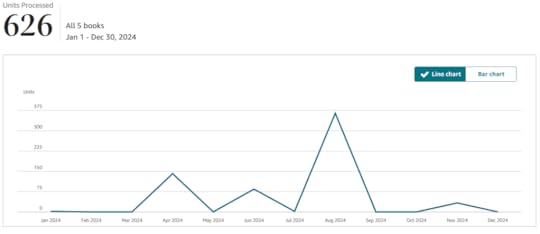
I also got married. That was pretty neat.
And that’s it. Which brings me neatly onto my resolutions of last year…
1 – Boiling Seas 3
I haven’t published a book this year. Objectively, this isn’t exactly a problem. The fact that I’ve been able to publish something every year for the last 5 years is an anomaly, not the norm for an author of any stripe, indie or traditional. But breaking the streak annoys me, damnit, and I promised myself last year that I would publish Boiling Seas 3 in 2024. And I didn’t.
Writing is hard. Writing trilogies is harder. Rewriting/editing the conclusion to a trilogy when you’ve also got a wedding to plan is even harder, and while I know that these are all extremely good reasons to have not got it all done, I find it hard to let myself get away with it.
But I have finished the redraft. The Owl in the Labyrinth is now with my proofreaders, and given I already (prematurely) did the cover, all being well I’ll get it out by the middle of next year.
2 – Write More Shorts
Now this one I definitely achieved. I wrote 8 new shorter stories this year, some fantasy, some sci-fi, some just weird. And I really enjoyed doing it. I enjoyed writing some of them so much that I also wrote sequels to them, which probably wasn’t the most productive idea given the first ones are still out being rejected by various magazines, but at least I enjoyed it. There’s some good writing in there, I think. Hopefully I’ll be able to tell you more about it soon.
3 – Marketing
I have singularly failed to get any better at marketing. This isn’t a surprise, honestly: with the wedding and the rest of my life going on I was struggling to write on many days, let alone think about publicity. But I’ll give myself some credit for TBRCon, for getting involved in some more group sales, and for a Secret Third Thing which will exist next year…
4 – Agents
Again, success here – not complete success but some success. Remember Salvage 7? That gritty SF book I uploaded here chapter by chapter ages ago and then mysteriously took down? Well I took it down so I could tweak it and then send it out to agents… and I actually got some responses. They were all rejections, of course, or you’d have heard about it already, but one was an extremely kind rejection after a full manuscript request – a rejection that came with a bunch of advice for changes, and an invitation to resubmit with those changes whenever I was ready. Which, on the whole, was pretty damn great.
5 – Something New
I did write a lot of fresh shorts, but this was really intended to be a new long-form project, which didn’t really materialise – I was too busy trying and failing to finish the last long-form project. Still, new ideas and new characters have materialised, and that’s probably good enough.
And so we come to my resolutions for the year ahead: what am I going to overpromise this time around?
1 – For the Love of the Gods Please Publish The Owl in the Labyrinth
This time, I promise. This time I’m actually going to get this one done. It’s got a title, it’s got a cover, it’s got a much better second draft and it’s actually being read by human beings right now. I can do it. I can publish it in 2025.
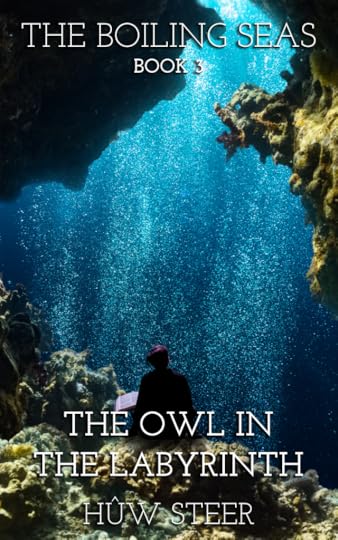
2 – Rejig Salvage 7
This is the big one. I have a lot of unfinished Salvage 7 Book 2 to draw on, a long list of good advice from an actual professional, and a few new ideas rattling around. It’s going to be a much longer book when I’m done with it but it’ll be a better one too. I would very much like to take that agent up on his resubmission offer before the year is out.
3 – MARKETING
I still don’t know how to do this. Maybe I’ll learn. I will at least try. And hopefully Semi-Secret Upcoming Thing will help matters.
I don’t want to set any goals for short stories this year, I think: I’ve written plenty, I’ll be writing more, and honestly now that I’ve done the writing part I’m at the mercy of the many short story markets that I’m constantly perusing. With luck, I’ll have some more credits for the list this year, but it’s not entirely in my hands, so not a resolution I can really make.
However…
4 – Audio
I made a TikTok this year, which is at least an effort at marketing, but more importantly I recorded myself reading an extract from one of my books. I recorded it with a rubbish mic, and I did it quickly, but I rather liked it. I know some people with better audio equipment. I have a lot of words going unread. I’d like to give it a proper go, and maybe come up with something that I can share with you lot.
So there we have it. The year is almost over, the new one will soon begin, and I’m just going to try not to think about how many games and films and books consider 2025 to be the Distant Future, and how rubbish the real world is in comparison. Give us flying cars, you cowards!
See you next year.
December 22, 2024
The Second Draft
This blog is short, and it is late, and both these statements have the same cause.
I realised that as General Winter Festivities start tomorrow for me, I should probably get a bit more editing in before I am too full of food to be sufficiently motivated.
Well, apart from a 3-hour break to go and see Wicked, which was excellent, I’ve spent pretty much all day at my keyboard.
I am therefore delighted to report that I, simultaneously a year late and a week early, have finished the second draft of The Owl in the Labyrinth.

It is 26,000 words shorter than before. The plot has changed, a bit. Some characters have been cut, which at least means they are nominally still alive. The same cannot be said for some other characters. It is much the same but it is also very different.
I think it’s a good story. After 2 years of writing it, it had better be.
Now… now this draft wings its way to my proofreaders. They’ll have a look, point out all the flaws, and hopefully I won’t spend another year fixing them all.
But it’s finished. Again. For now.
I’m a happy man.
December 15, 2024
Shadows of the Apt
I realised last week that I hadn’t read Adrian Tchaikovsky’s Shadows of the Apt series in several years. I thought I’d pick up the first book again just for a little light reading in-between other projects.
I’ve almost finished book 4 now, and my devouring of this world shows no signs of slowing. I had forgotten, dear readers, just how good this series is. Tchaikovsky is currently renowned for his weird sci-fi above all else, but Shadows of the Apt is one of the best epic fantasy series I have ever read.
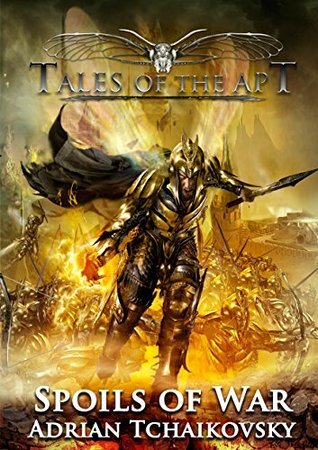
To summarise the world itself: everybody is bugs. Well, every group of Insect-Kinden are human, but thanks to their close ancestral bonds with the giant insects that stalk their world – pretty much everything is insects, except for fish and horses – they all have inherent insect powers. Dragonflies can fly. Wasps can sting (with fireballs). Ants are all telepathic – but only with the other Ants of their own cities. Beetles endure. Right off the bat, the focus on insects draws you into this incredibly rich, slightly steampunk world.
Because that technological aspect is the other unique bit of worldbuilding: the division between Apt races, who can understand and build machines, and the Inapt, who… just can’t. There is an Old World in this universe, a high fantasy of heroes and magic, which was brought crashing down by a literal technological revolution. The Mantids are the greatest warriors ever to stalk the world – but they can’t open a locked door or fire a crossbow.
And into this divided world comes the great Empire of the Wasps, bent on conquering everything they can see, and against them stand the motley cities of Ants, Beetles, Flies and Spiders and all the other kinden – who of course all hate each other already. It’s up to a lowly Beetle to try and draw the world together against its would-be conquerors in whatever way he can.
I realise this is a very potted summary but honestly, there is so much in these books to talk about that it’s hard to choose what. The richness of this setting cannot be understated: Tchaikovsky has built dozens of entire civilisations, drawing from histories across the world, from the Roman-like Wasps to the Chinese-flavoured Dragonflies, and augmented it all with this fantastic insect aspect. Every kinden’s society is so well thought-out down to the architecture: Beetles build solid, low buildings, but Dragonflies build in wood and put the doors on the roof because they can all fly, for instance. The army of the Wasps isn’t just ‘here are loads of nasty Roman soldiers with fireballs’ – they have airborne infantry, and the fact that they’ve all got wings means that we can have steampunk paratroopers throwing themselves out of airships… while of course avoiding attack by gigantic dragonflies as beasts of war. The detail goes down to eating habits – beetle jerky instead of beef!
I cannot spare the time to wax too lyrically about this series today. I haven’t even started on the characters – maybe that’s a future post. But suffice it to say that this series had such an impact on me as a teenager that I wrote poetry based on two of the main characters. It still exists, somewhere. Please don’t look for it.
There are few things sweeter, I think, than dusting off an old book series that you loved when you were young, and finding that it is just as good, if not even better, than you remember it being. Shadows of the Apt is one of those series.
December 8, 2024
Artefacts – Writing What You Know
They say that you should write what you know. This is often difficult for the sci-fi and fantasy author, who as a general rule has not been to space, fought evil robots or has ever been chosen as the hero of prophecy by a wizard and a talking sword. But we make do. I’ve gotten around this in the past in many ways: the Boiling Seas series is about archaeology, uncovering ancient history, which works for my Ancient History degrees; Ad Luna is literally based on the topic of said degrees’ theses; ‘Great Martian Railways’ is about trains, which I’ve loved since I was a kid; The Singer is based on where I grew up.
But one of my favourite ways to sneak in what I know is when I’m writing sci-fi. It’s a thing that I love to find when I’m reading, too – when a story set in the near or distant future finds a way to pop in a reference to the here and now.
In the post-apocalypse it’s often an easy thing to do, because your characters are normally walking around the ruins of the old world. Going full Planet of the Apes and having some modern monument as an ancient ruin is a tried and tested trope. I prefer a more personal touch. I like to fit in references to the world I know – which isn’t necessarily the world that my readers know.
When I was at university, I worked for an events caterer doing corporate breakfasts and weddings and all that jazz, and was often found at an architecture firm in the middle of London. Their events space was dominated by a huge relief map of the city: a to-scale, three-dimensional model of most of London, with every blocky building in its place on those sketched streets. I spent a good portion of my university life standing around that model. I got very familiar with it. So when I needed to give a future resistance movement a map of London to pore over, there was only one choice. If I ever get that book published, it might outlast that mighty map. (If I ever get that book published and have a big enough house I’m buying that map.)
The story I wrote most recently, though, was an opportunity for a very special artefact. I needed to write an Earth of the far future, with dried-up oceans and ravaged soil. I needed a location to build a little oasis of green, a surviving farm (of a sort – no spoilers here).
So I wrote a ruined farmhouse, near what was once the south coast of what was once England. I wrote a high hill, with a house that had been tumbling down before civilisation collapsed. I wrote an island of calm, of tended grass and wandering sheep, overlooking an old chalk quarry and distant hills beyond. What I wrote, and where I stationed my protagonists, was Ash Farm, near Eastbourne. What I wrote was my grandparents’ old house.
It’s not like the house itself is given much time: the original house isn’t standing now, let alone hundreds of thousands of years into the future. The action quickly takes my protagonists away from that little farm and into a very different place altogether. But it’s there, that little house, that hill, that chalky overlook. The place where I spent so long as a child is there, set down permanently in words, unlike its bricks.
It’s sentimental, I know, and most people who read this story will have absolutely no clue what I’m talking about. But that’s the point. These real-life artefacts aren’t touchstones for the audience, they’re ways to flesh out the world I’ve created. They bring a touch of reality, of familiarity, to what’s often a very strange world, even if it’s not something the reader is directly familiar with. I could delve into my imagination for hours and never come up with as vivid and lifelike a description as I can of that old farmhouse on that chalky hilltop. It is real. And so it can become fiction, too.
December 1, 2024
Motivation
Look, it’s a rainy day and I’ve just filled out my tax return: I almost didn’t write anything at all. But I think this is another one of those days where I need to write a bit about perseverance in this career, and expectations, and how writers can get that motivation to keep going, because today I think I need it too.
I’ve objectively had a decent few weeks, writing-wise. I got a lot of editing done on The Owl in the Labyrinth. I recorded a podcast for next year, with the excellent Saffron Asteria of the coming soon excellent thing that is Indiosyncrasy; we basically had a lovely conversation about writing and things tangentially connected to it that should be out in a few months. I sold a few books – even The Fire Within, which never sells any copies – and I may sell a few more, given that Ad Luna is on sale for a few more days. I was informed that a short story I’ve already submitted is through to the third round of its slush pile. I wrote more of the new short story I’ve been working on. I was productive. I got things done. I read and reviewed and wrote.
I do not feel like I’ve been productive today, despite listing this evidence to the contrary. I feel like I’ve achieved bugger-all.
I have many stories out on submission; I have heard nothing from them in months, save the aforementioned third-rounder and another story which was offered a second viewing after rewrite, but only after such pernickety formatting changes and feedback that made me question if the story had even been read in full that I’m honestly not feeling the publication at all. The lack of news makes me look back; this inevitably leads me to remember that I’ve sold nothing new this year at all, despite the belated publication of Great Martian Railways. The lack of short stories out makes me remember that thanks to my abysmally slow editing process I’m not going to have a book out this year despite my best hopes. That lack of progress makes me compulsively check my Goodreads and see that I haven’t had a new review in about a year either, despite shifting hundreds of free books. That lack of feedback makes me question if anyone who does buy my books actually reads them at all.
Then I submit my tax return, find out just how broke I’m about to be, and the nail, as they say, is hammered in nice and firmly.
Some days this path is difficult to walk. Some days it is hard to balance the good things against the bad. Like the fact that I’ve put more books in more pairs of hands this year than any previously; like the fact that I’ve at least finished writing all these short stories out on sub; like the fact that I’ve connected with so many other people in this leaky boat this year who probably feel exactly the same way just as often as I do.
Some days writing words feels like shouting into the void, for all the good it does. And then some days I’ll talk to those rare people who’ve read my work. I’ll hear them sing its praises. Or I’ll make a connection with someone new with work of their own that’s crying out to be read and read widely. And one day, maybe I’ll get one of those bits of proper good news that I’ve been waiting for so long.
Some days this path is dark. Some days the sun comes through. I just need to remember that, and maybe you do too.
November 24, 2024
The Great Editing Week-Off – Results
So what I should have done, before I started this Big Week of Editing, was note down where I’d actually gotten to in the edit so far, so I could tally up how much I got done without having to re-read my own tweets and do the maths again. But I didn’t, so I’ve just been scrolling back through a very big Word doc, counting words and pages and figuring out where I was at this time last week.
In summation: I got quite a lot done.
Last week, The Owl in the Labyrinth’s second draft was just under 90,000 words long – now it’s cracked 105,000. 8 chapters, 15,000+ words, and 50 pages of book have been added to the increasingly unwieldy behemoth that is this grand finale to the Boiling Seas. Given I also added 1500 words to another short story early in the week, I’d say that’s pretty good going for 6 days of work, especially given one of them was my birthday and I was somewhat distracted!

Is the draft done yet? Oh, absolutely not. There are 34,000 words left in the original manuscript. I’m not going to add all of those, but I am going to have to write a bunch of new ones to replace some of them. I’ve reached Part 4 of 4 – which, while a great milestone, also heralds the most complicated part of the edit so far. I thought the Part 2 heist sequence was complicated: now I’ve managed to split all 3 POVs up again in a dramatic race to do 17 things at once to stop the villains doing Villain Things. And I’m doing it differently to the original draft, which means a lot more cutting and pasting and reworking around the new plot.
This bit’s going to take a while, is what I’m saying. But as complex as it is, it’s still the home stretch. All the players are in the final location, the big scrap has begun, and the end is very much in sight. It’s going to be a tough task to get there but I’m confident that it won’t take too long. Having this second draft done by the end of the year seems very much possible.
Can I dedicate as much time to the edit in this last month as I have this week? No: I have jobs to do and taxes to pay. But if I can just do a few thousand words a week then it’s possible. My proofreaders might even get it in time for Christmas.
Just being in this place makes me nervous. I’ve spent longer working on this book than I have on anything I’ve published, and I want it to work. This final push, this final action-packed sequence, will make or break the whole thing, and I really have to get it right: for you lot and for myself.
So no pressure, eh?
Now, I’ve got a little time today, so let’s get another chunk done, just to round the week off nicely.
November 17, 2024
The Great Editing Week-Off
Right. This coming week, I’m off work. (Mostly; I’ve still got some freelance stuff to do.) This is nominally because of my birthday next week, but that’s only one day. I have some errands to run, some things to do… but I have one real purpose for this week. One thing I intend to do if it kills me.
Edit. The. Book.

I reckon I’m about ¾ of the way through the redraft of The Owl in the Labyrinth now. This is a significantly longer ¾ than I intended to end up with at nearly 90,000 words, but hopefully it’ll still end up shorter than the gargantuan first draft and merely be ‘really bloody big’. For context, Nightingale’s Sword was about 98,000 words and Blackbird 63,000. This was always going to be a big book – I’m just hoping I can get it to the point where it’s not literally as long as both its predecessors combined.
I have a whole week to sit down and focus and get some chapters trimmed. I’m not fully rewriting, just re-evaluating: I’ve tinkered with the structure especially of the second act, and now need to make sure the consequences of that tinkering are properly borne out in acts 3 and 4. I got through act 3 last week: one of my favourite extended sequences I’ve ever written, because who doesn’t enjoy writing about steampunk submarines? I have finally reunited some people who really needed reuniting – my dream team is back together and now I need to actually wrap up the bloody plot.
There are some obvious cuts I can think of, which is handy. There are some changes I’m torn on making, too. Some fates may change; some characters may emerge more scathed than they did in the original draft. But the ultimate ending should stay the same, or thereabouts. The main challenge will be re-balancing and definitely cutting down the Big Climactic Sequence with its 3 separate POVS and way too much waffling along the way. All the set-pieces are really cool, and I liked writing them, but when I get into these things I often find myself getting carried away. I have so much fun writing cool fights – a case in point would be the airship hijacking in Nightingale, which was originally about twice as long as it ended up being – that I just don’t want to stop and they balloon into unwieldy messes. This is definitely the case for Owl’s climax. I had cool ideas to start with, and came up with more as I wrote and desperately shoved them in. Some will have to go. But nothing in my library is ever wasted: I’m sure I can find uses for such fun snippets of action elsewhere. Maybe in those Boiling Seas short stories I’ve been talking about…
I don’t expect to completely finish the redraft this week. But I do intend to get as far into it as I can, because I want to get my little proofreading crew on-task by Christmas. There will be more things that need changing, I know it. This is a monster of a book, wrapping up lots of threads, and I really, really want to take the time to make it as good as it can be.
But I also want it done. I can’t let myself start another long-form project until Owl is finished; if I do, I’ll just get distracted and it’ll be another bloody year before the thing comes out. I have ideas aplenty waiting in the wings. But Owl must fly first.
I’ll post updates on my Twitter/Bluesky on how this week goes as it goes, and this time next week I’ll tell you all the final result.
Let’s see what I can do.
November 10, 2024
Character Design, Art, and What You Make Of It
I’m not very good at drawing. I never have been. Especially not things that actually exist, like… people, or objects.
I’m not terrible, but I’m not great, and this is probably exacerbated by the fact that I don’t really practice much. My artistic brain has always been channelled either into writing or physically making stuff. I can write one hell of a character description (he says, adjusting the valves of his own trumpet), but realising it in a visual form? Help me. Please.
The spark for rambling about this was looking through my old sketchbook, which despite the fact that I must have had it for a decade or so now is exactly 1/3 full. I really thought I’d drawn more in it, I’ll be honest. I take solace in the fact that I do have a bit of digital art lying around – I had/have an app called Paper on my iPad which I played around with a lot at university. I leave that solace behind when I look at how not-particularly-good those digital drawings are, either.
I’ve decided to try and get better at drawing several times but every time, I pick up a pencil for a few days, maybe a week or two, and then bounce off it. As a result, I’ve never gotten much better. It’s almost like continuous practice – like, say, writing 500 words every single day for almost a decade – lets you get better at doing something!
But my brain doesn’t quite click with visual art – at least not this kind. What I can do, decently well, is build and paint miniatures. That, I enjoy; that I also practice, and that I have slowly improved at over time, for all that I’m guilty of not pushing myself to try new techniques often enough to actually get better at the painting. But I like making little guys. I like kitbashing them to give personality; trinkets here, scopes and weird equipment there, to imply specialist roles and bring them to life a little more.
(To a lesser extent, LEGO fills this niche: I like to just build little things from my imagination sometimes, just let designs come together from the bricks. But mostly I do sets these days.)
What I’m doing, I realised (again) the other day, as I posed another Space Marine kill-team, is character design. I’m doing what more talented people do with pencil and paper, what I normally have to do with words and my mind’s eye alone. Because I can imagine these people perfectly: Tal Wenlock, Alexander Dio, Perce, the farmers of Quern. I know what they look like in my head. I just can’t render that as an image. I have to let my words do the work for me. Because, as this drawing I found in my sketchbook from around 2016 proves, of what appears to be some sort of prototype Tal Wenlock, my art certainly ain’t doing the trick.
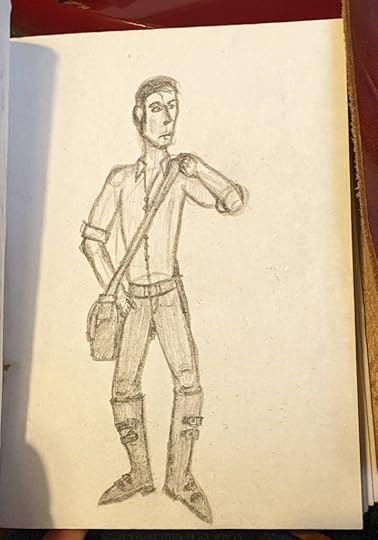 He’s not bad. He’s just not very good.
He’s not bad. He’s just not very good.Sometimes, miniatures can do the work for me: my DnD characters have been rendered in physical form well enough, but with my current bitz box that only really works for either swords-and-sorcery folk like Sir Geoffrey or the denizens of the grim darkness of the far future. If a character doesn’t have the capacity for extreme violence then unfortunately I haven’t got the parts to build them.
So it’s words for me. The only physical versions of most of my characters are how my words describe them. And you may have noticed, as I have, that I don’t often actually give a full physical description of a character. I don’t like to specify hair or skin colour or facial features. I prefer the more abstract things: height, build, expression; maybe a key feature like Barty Rubin’s gold teeth. I want you to get the feel of these characters in your own mind rather than being pinned to a precise version from mine.
(The one real exception to this is Gideon the Effervescent, who looks exactly like his appearance on The Fire Within’ s cover, because he just leapt so vividly into my mind that he had to be just so.)
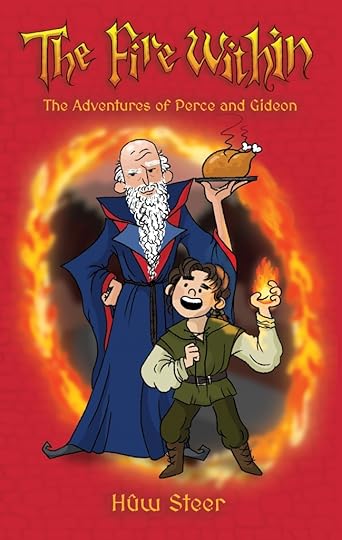
Because ultimately I want you to imagine them how you want, in specific terms. In my head, Tal Wenlock looks a lot like me. So does Alexander Dio; so does Tom the farmer. Because I’m writing from their perspectives, I’m putting myself in their shoes – but when you read these stories I want you to do the same. So much of my childhood (and current) escapism is rooted in putting myself in these stories, in identifying with these characters I love so strongly. I want my readers to be able to do the same. I don’t want anyone to feel like they couldn’t be Max Odyn because they don’t look like her. I don’t want anyone to feel like they couldn’t draw or realise their own interpretation of Dio in his armour. I don’t want anyone to feel locked out of the adventure because they don’t look right.
Art is subjective. There’s room for so many interpretations of what I’ve written and what I’m writing. I want to leave that space for all of them. Including, maybe, mine, if I can persuade myself to pick up a pencil properly again. There are versions of these characters in my mind that I might set down in visual form. But they’ll only ever be versions. The words are the only canon, and even that’s up for interpretation.
…I guess what I’m saying is, I need to do more drawing, but if you want to do it to, please do. I’d love to see it.

